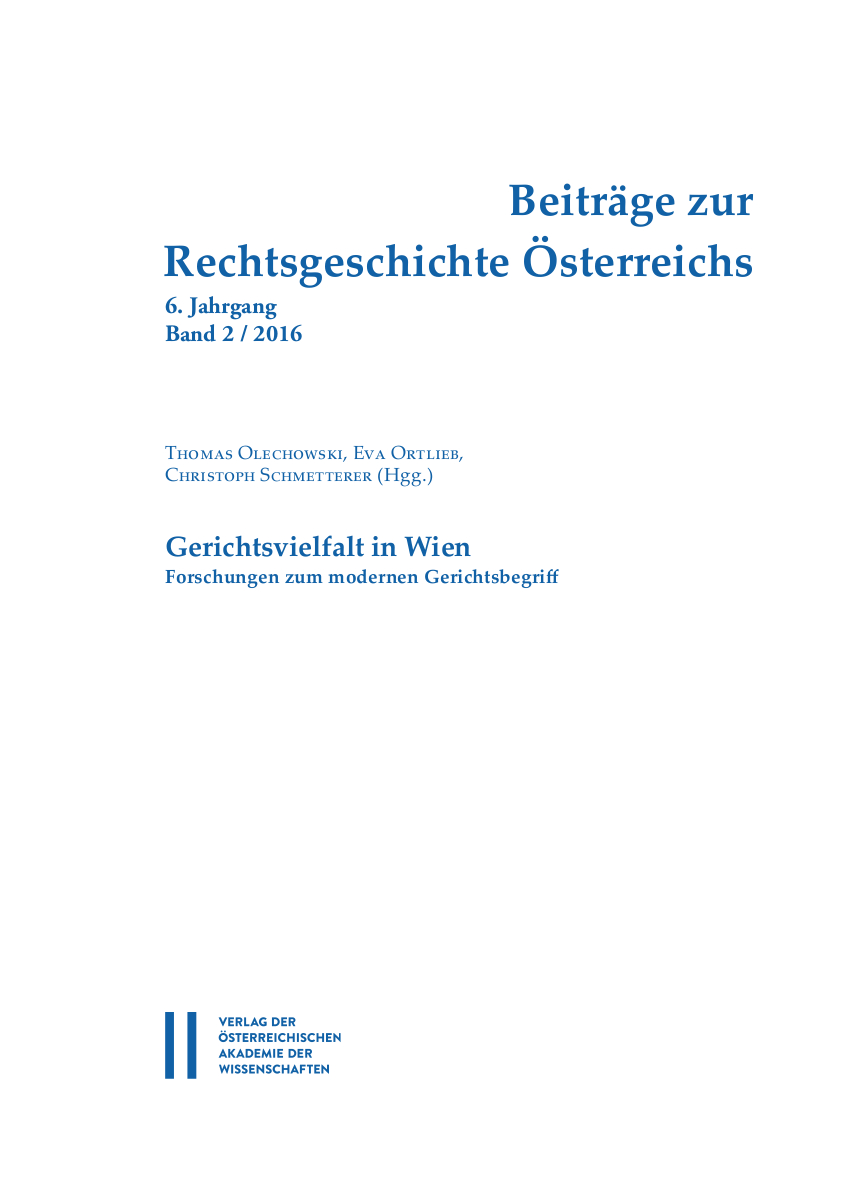
Beiträge zur Rechtsgeschichte Österreichs 2 / 2016, pp. 218-238, 2016/10/11
Gerichtsvielfalt in Wien
Forschungen zum modernen Gerichtsbegriff

Under the Habsburg rulers, the Bohemian Court Chancery developed not only into the central ministry of the Bohemian composite state (which itself had been a part of the Habsburg monarchy since 1526) but also into its highest court of law. This study, using some fresh sources, analyzes this development and its consequences. Although the Renewed Land Ordinance for Bohemia (1627) and its counterpart for Moravia (1628) have been rightly described as milestones in this process, this study argues that the implementation of the right to appeal against the noble courts’ decisions in Silesian duchies had prepared this development from the second half of the sixteenth century onward. At this stage, however, appeals were still directed to the Court of Appeal which had been erected in Prague in 1548. Nevertheless, the Chancery became involved too and the seventeenth century then witnessed its rise into the central court of revision for almost all noble courts in the Bohemian lands. Supreme Chancellor Wilhelm Slawata´s personal letters from the 1630s and 1640s offer useful insights into how the Chancery summoned and coordinated revision commissions in which councillors from other courts (mostly from the Imperial Aulic Council and from the Lower Austrian ‘Regierung’) used to be appointed because the chancery long lacked the necessary staff. So far unused sources from later decades show that revision requests became a burden which the Chancery, despite its striking rise in the eighteenth century, was unable to manage. The slowness of justice finally became one of the arguments which helped to dissolve the Chancery in 1749 and to transfer its many councillors to the newly founded ‘Obriste Justizstelle’.
Keywords: appeal - Bohemian Court Chancery - legal remedy - revision